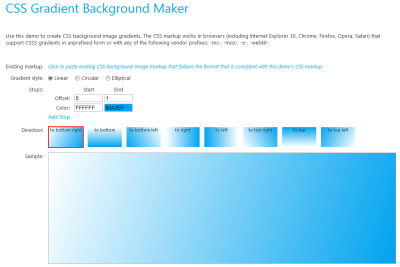Internet Explorer 10 и HTML 5

With Internet Explorer 10, Microsoft wants to continue to develop support for HTML 5 and CSS 3 and create immersive applications.
IE10 is available for Windows 7 in all countries from February 26, 2013.
Native HTML 5, CSS 3 Gradient, Flexbox
To speed up the browser and give access to Windows functions, Microsoft removed all intermediate layers between applications in IE 10 and the base system, providing direct access to functions from it.
Thus, the web application will work as a Windows application.
Critics will say that the term is rather superficial, all current browsers use hardware acceleration with similar capabilities.
Internet Explorer is also becoming a component of Windows 8 for immersive applications.
New HTML 5 features are supported:
- Drag and drop.
- Reader API.
- Form validation features.
- Iframe: sandbox attribute for safe execution in separate environment .

Shading tool
CSS3 now supports shadings that allow you to create widgets similar to the native components of mobile phone systems.
3D transformations and transitions are also added.
Microsoft is providing an online tool to demonstrate this new gradient feature.
Flexible flexbox frameworks inspired by Mozilla and the XUL interface language provide dynamic display of content based on screen size - from desktop to mobile.
Float placement can be done now inside the page and not only on the left or right.
Other enhancements and changes:
- JavaScript 5, which adds the JSON.parse method and new properties to objects.
- Asynchronous attribute for asynchronous scripting.
- Web working APIs for running background scripts without affecting the view.
- By default, the "Do not track" function is enabled, which will not allow ads to fit into the center of the user's interests.
- Built-in flash. Flash Player is not a plugin, but part of a browser, and it allows you to run Metro-style applications.